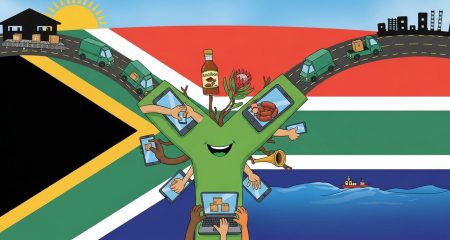
Mapping is one of fastest-growing areas in companies’ IT expenditure. Three-quarters of large companies and two-thirds of small and medium enterprises (SMEs) expect to spend more of their budgets on digital mapping services this year.
These are just some of the findings of a report commissioned by mapping company MapIT and conducted by World Wide Worx, which surveyed hundreds of South African businesses about the ways in which they use digital mapping.
Worx MD Arthur Goldstuck says of those companies surveyed, half have over a thousand employees. He says the survey focused on JSE-listed companies.
“Almost half of corporates have operations outside South Africa’s borders,” Goldstuck says. “Traditional mapping services that only focus on South Africa are not enough for the local market.”
However, in the SME sector, fewer than than a quarter of companies operate outside South Africa, meaning they have different digital mapping needs.
“A third of corporates spend more than 10% of their IT budget on mapping services,” Goldstuck says. The primary uses of digital mapping services, according to those surveyed, are security, navigation and tracking for fleets, and location-based marketing.
A quarter of large companies that aren’t currently using location-based marketing will add it in 2013, according to Goldstuck, who says 41% were using such services in 2012.
Three-quarters of large companies spend more than R50 000/year on mapping services, and as many as a fifth spend more than R500 000 annually. Three-quarters of those surveyed expect to increase their budget for mapping in 2013, while only 3% anticipate spending less. “This suggests it must be working for them,” he says.
Efficiency, security and productivity are the primary motivators driving corporate spending on digital mapping, with companies also reporting that effective mapping services make them more competitive and cost effective.
While consumers’ primary use of mapping is navigation, Goldstuck says businesses use it for far more complex tasks.
Etienne Louw, MD of MapIT, which funded the research, says demand for mapping services is growing and includes logistical optimisation using a combination of historical traffic information and real-time data. One of MapIT’s shareholders is navigation company TomTom and this is the source of the company’s traffic data.
“Companies are prepared to pay more for localised, targeted marketing,” Louw says. Consumers are demanding local and relevant information and are growing increasingly intolerant of blanket marketing.
The use of “check-in” services like FourSquare also suggests consumers are becoming more confident about using location-based services and less concerned about privacy, Louw says. There is room for growth in the indoor-mapping arena for shopping malls and other public spaces. MapIT has already mapped 36 South African shopping centres.
“Digital mapping is proving to be the hidden secret weapon of South African business,” Louw says. “The research underlines the extent to which large and small businesses alike depend on digital maps.” — (c) 2013 NewsCentral Media




